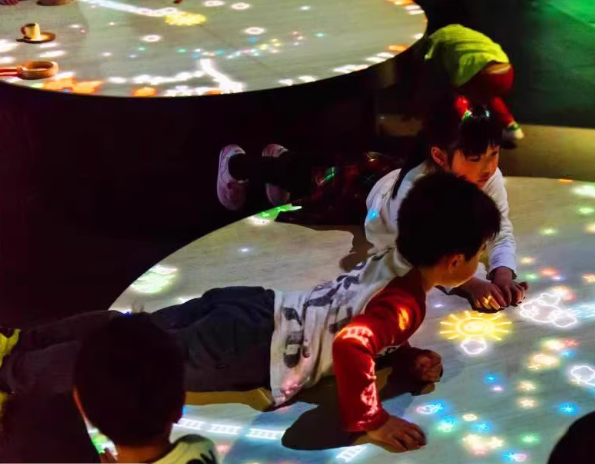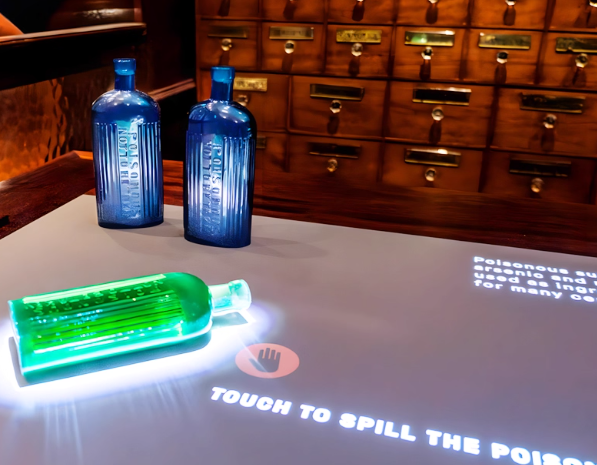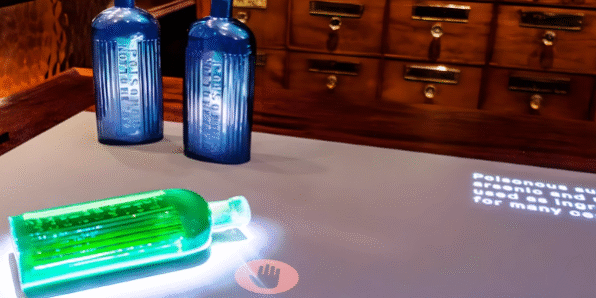Introduction: The Rise of Immersive Dining
Traditional dining has long been about food and ambiance—but technology is taking it to a whole new level. Holographic projection restaurants are redefining the customer experience by blending real-time interaction, immersive visuals, and sensor-based environments. Powered by advanced LiDAR (Light Detection and Ranging) technology and dynamic projection systems, these smart restaurants are creating unforgettable, multi-sensory experiences.

How Holographic Projection Restaurants Are Innovating Interactive Dining
1. Real-Time Motion Capture & Interaction
Using LiDAR sensors, high-precision cameras, and environmental sensors, these futuristic restaurants can track customers’ gestures and movements in real-time. Patrons can wave their hands to interact with projected wildlife, play with floating digital objects, or browse the menu via mid-air gestures.
This kind of gesture-based interactivity not only engages diners, especially children, but also creates a unique memory that far exceeds traditional dining entertainment.
2. Smart Tabletop Projection & Multi-Touch Interaction
The dining table becomes more than just a surface—it transforms into a fully interactive display. Diners can:
- Browse the digital menu through touch or gestures
- Play collaborative games with friends or family
- View interactive food animations while waiting for their meal
This multi-touch projection is made possible through LiDAR touch sensing and infrared detection, delivering a responsive and intuitive interface for guests.
3. Immersive Multi-Screen Environments
By fusing multiple projectors with intelligent edge blending, restaurants can generate 360-degree immersive environments. From enchanted forests to ocean floors, the ambiance can change dynamically throughout the meal.
LiDAR technology ensures that the projection mapping aligns precisely with the physical space, maintaining high levels of accuracy and realism—even when people move through the environment.

4. Multi-Sensory Fusion: Sight, Sound, and Space
In these restaurants, visuals are only part of the experience. They are accompanied by:
- Spatial audio systems delivering ambient sounds matching the theme
- Dynamic lighting and shadows synchronized with the visuals
- Environmental effects such as light fog or aroma diffusion (optional)
By merging sight, sound, and spatial awareness, guests are completely immersed in a curated digital environment that responds to them.
5. Private Immersive Dining Spaces
Utilizing LiDAR sensing and holographic projection, these restaurants can create individual, isolated immersive spaces. Visual barriers and targeted projection keep each party’s experience private and uninterrupted, allowing for intimate, focused dining that feels personal and exclusive.
LiDAR at the Heart of Interactive Projection Restaurants
LiDAR plays a central role in delivering seamless interactivity. From detecting motion and position with millimeter precision to enabling multi-touch interactions on irregular surfaces, LiDAR sensors offer unmatched accuracy and responsiveness.
Unlike traditional infrared-based systems, LiDAR is highly resistant to ambient light and can operate effectively in various lighting conditions, making it ideal for restaurant environments that depend on dramatic lighting effects.
Why Choose CPJROBOT for Your Restaurant’s LiDAR Solution?
CPJROBOT is a leading provider specializing in POE-powered interactive LiDAR and industrial-grade radar systems. Whether you’re building an immersive restaurant, an interactive exhibit, or a smart commercial space, CPJROBOT provides:
- Reliable, plug-and-play POE LiDAR modules
- Free calibration and interaction software
- Over 100 free interactive games and templates
- Customizable interactive projection solutions
Backed by years of R&D in radar-based interaction technologies, CPJROBOT empowers developers, designers, and restaurant owners to create cutting-edge dining experiences with ease.
Conclusion: The Future of Dining is Interactive
Holographic projection restaurants are more than a novelty—they represent a shift toward immersive, personalized, and tech-driven customer experiences. With LiDAR-enabled interactivity, diners are no longer passive participants—they become part of the environment.
As this trend continues to grow, businesses that adopt these innovations early will not only stand out—but also build stronger emotional connections with their customers.
Ready to Elevate Your Restaurant Experience?
Contact CPJROBOT today to explore our full range of POE LiDAR solutions for interactive dining, entertainment, and beyond.







